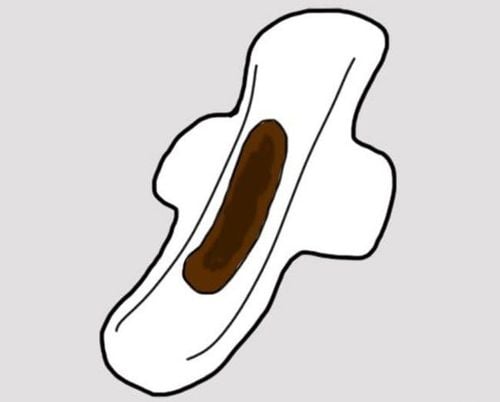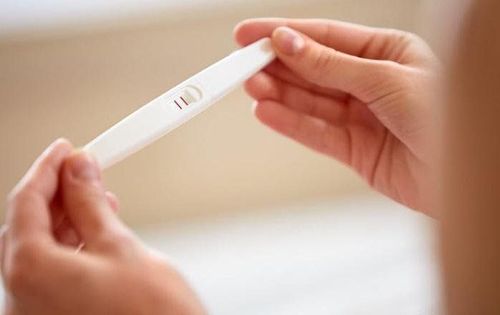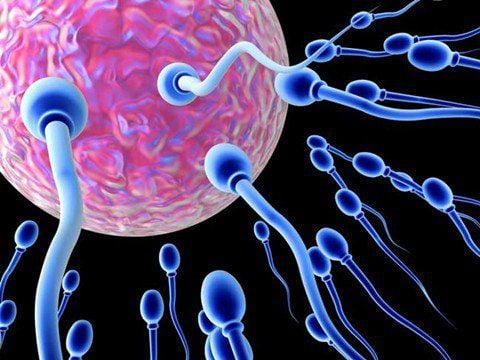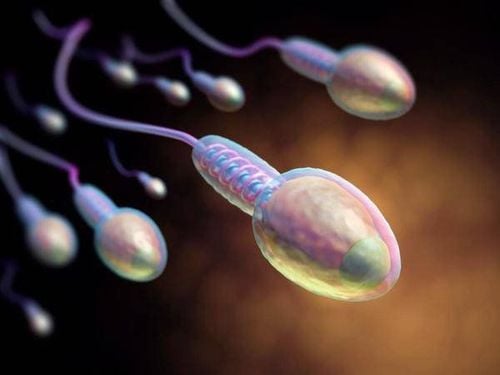This is an automatically translated article.
The article was professionally consulted by Bachelor Tran Hue Tran - IVF Specialist - Reproductive Support Center - Vinmec Times City International Hospital.Normal sperm morphology refers to the size and shape of individual sperm when viewed under a microscope. This is one of the important factors that contribute to male fertility. In particular, the shape of the head is important because it affects the ability of the sperm to dissolve with the outer surface of the egg and fertilize it.
1. What is the normal morphology of sperm?
Not all of a man's sperm is the same. Abnormalities in the size and shape of sperm can occur in the head, neck, midsection, or tail.In some cases, morphological abnormalities do not affect overall sperm function. In other cases, the sperm may not be able to move fast enough to reach the egg, pierce it, or get inside the egg.
Evaluation of sperm morphology is usually performed by doctors during a general semen analysis or fertility test.
2. Sperm morphology test
Sperm morphology test is the examination of semen samples under a microscope, counting and calculating the percentage of sperm with normal shape out of the total number of sperms present in that semen sample.Characteristics of normal sperm morphology include:
Head: The head is oval in shape with clear contours; Normal head size: width from 2.5 to 3.2 micrometers (μm) and length from 3.7 to 4.7 μm; The head pole occupies 40 to 70 percent of the sperm head volume; The head pole has no large vacuoles - fluid-filled organelles - and no more than two small vacuoles and makes up no more than 20 percent of the total volume of the sperm's head. The middle part of the spermatozoa: slender, about 0.5 - 0.7 μm in width, 3.3 - 5.2 μm in length, axially attached to the head. Tail: should be straight, even, tapered than the middle, not coiled, about 45 - 50 μm long (10 times head length). Sperm that are not shaped like described above are considered abnormal sperm.
Lab technicians usually process sperm morphology tests by placing a small portion of semen on a slide, allowing it to air dry, and then staining it with a dye that makes the sperm easier to see. than under the microscope.
Technicians usually calculate the percentage of normal-shaped sperm out of 200 or more sperm in a fraction of a semen sample.
Sperm morphology tests can also be performed using imaging analysis technology, such as computer-aided sperm morphology assessment (CASA).
According to the World Health Organization, computer-based sperm morphology tests are more accurate and reliable than manual tests because it eliminates human error.
One test is not enough to fully assess the quality of a man's semen or sperm.
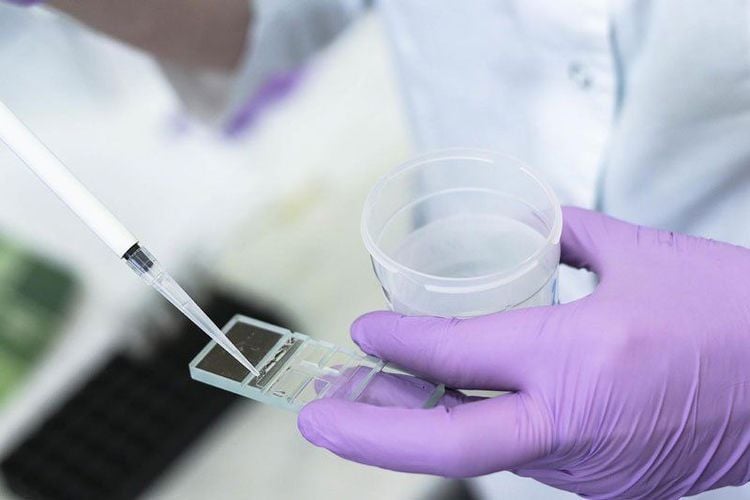
Xét nghiệm hình thái tinh trùng là kiểm tra các mẫu tinh dịch dưới kính hiển vi
Human error; Contamination; Mislabelling; Sample storage time before testing. Therefore, it will take more than one test to evaluate the results of sperm morphology as accurately as possible. Usually, a minimum of 3 tests with the same or similar results are needed to confirm qualities such as morphology, vitality, and motility of a man's sperm.
3. What do sperm morphology test results mean?
Normal spermatozoa have an oval head with a long tail. Sperm with abnormal morphology will have head or tail defects such as:Big head; Small head; Folded neck. Curved tail; Dual tail; ..... These defects can affect the sperm's ability to reach and penetrate the egg. However, having a large percentage of malformed sperm is not an uncommon condition. Typically, only about 4% to 10% of the sperm in a semen sample are morphologically normal, which means most sperm don't look perfect under the microscope.
The percentage of morphologically normal sperm can vary on the same semen sample, in the same laboratory, using the same scoring techniques. Most male fertility experts agree that the role of sperm morphology in predicting pregnancy is unclear and that it is a poor predictor of infertility unless close to 100% of spermatozoa are abnormal.
A morphologically normal sperm count below 4 percent could mean it's taking longer than usual to get pregnant. Test results showing a normal shape index of 0% usually means that normal insemination is unlikely to be successful, when in vitro fertilization (IVF) is needed.
If your doctor tells you that your sperm has microcephaly, in vitro fertilization (IVF) may be an option for you. In vitro fertilization is a method of assisted reproduction in which a doctor washes sperm, selects sperm with normal morphology, and injects it directly into an egg that has been removed from your partner. They will then implant the embryos in the woman's uterus. This is an invasive procedure, but it can be an effective treatment for infertility.
The criteria for sperm morphology were introduced less than a decade ago, so there is still a lot of variation in the way the test is performed and the interpretation of results.
Although sperm are abnormal in size or shape, they can still carry healthy genetic material. Many infertile men have a high percentage of abnormal sperm.
A man with a normal shape index < 4% should talk to doctors who specialize in male infertility so that the cause of the abnormal morphology ratio can be determined and, in some cases, they will recommend a course of treatment to improve sperm quality.
Doctors also believe that low sperm count with normal morphology also reduces semen quality and increases sperm damage.
More and more, however, researchers are discovering that morphology may not play as much of a role in infertility as previously thought.
A 2017 study found that men with a 0% normal shape index were still able to achieve near-normal fertility rates. Research also shows that IVF therapy is often ineffective in men with normal shape less than 4%.
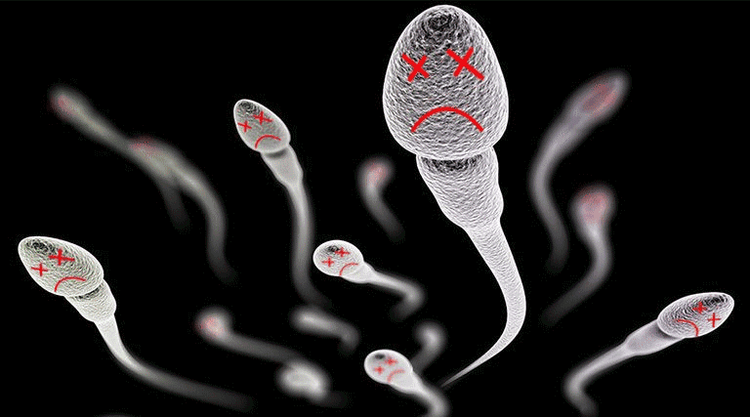
Mặc dù tinh trùng có kích thước hoặc hình dạng bất thường, nhưng chúng vẫn có thể mang vật chất di truyền khỏe mạnh
Some of the newer DNA tests available to evaluate the quality of semen include:
Sperm chromatin test (SCSA) DNA fragmentation test In addition to in vitro fertilization, people with With normal sperm morphology index, the method of intracytoplasmic sperm injection (ICSI) can be selected. In which normal sperm is isolated from a semen sample and injected into an egg, it may be a good option for men with low sperm morphology scores.
4. Other reproductive factors
Sperm morphology testing is only one part of semen analysis. Other factors and hormone levels commonly evaluated during a semen analysis include:Percentage of live sperm; Motility, or general movement patterns and motility of the sperm; Concentration of semen; Total fluid volume of semen; The ability to liquefy or how quickly the semen liquefies to facilitate sperm movement; Total sperm count; Thickness of semen (viscosity); The appearance of semen; semen pH; Foreign cells in semen, usually bacteria; Testosterone ; Sex hormone-binding globulin (SHBG); Follicle-stimulating hormone (FSH); Prolactin; Estradiol; DNA form and function. The presence of other body cells in the semen can also be assessed, such as:
Epithelial cells (cells from the vas deferens). Immune cells such as white blood cells (white blood cells) and macrophages (scavenging immune cells).
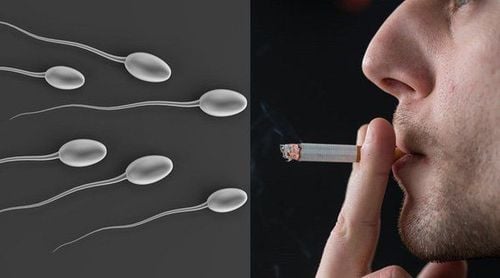
Cơ thể của bạn luôn sản xuất tinh trùng mới, vì vậy những thay đổi về chế độ ăn uống hoặc lối sống của bạn có thể ảnh hưởng đến sức khỏe của tinh trùng
5. Can you improve sperm morphology?
When you're younger, your sperm is usually healthier. So, according to some doctors, you should freeze your sperm earlier in life so that you have the healthiest sperm available to use when you need them. However, if you already know that your sperm morphology range is low, it will be too late for that option.Your body is always producing new sperm, so changes to your diet or lifestyle can affect the health of your sperm in the future, including:
Weight loss; Exercise regularly; Limit excessive alcohol consumption, tobacco use or illegal drugs Wear loose cotton shorts; Natural supplements and vitamins can also be helpful in promoting an increase in the number of morphologically normal sperm. To date, the exact role and influence of sperm morphology on fertility is controversial. The criteria for evaluating a normal sperm count also vary among physicians. In the past, if a man had a low sperm morphology index, doctors would probably use assisted reproductive technologies.
However, an abnormal semen analysis result does not mean that you are infertile. Many men with low semen analysis values are still able to father children naturally, although it may take longer for them. If you and your partner are unable to conceive through sex, assisted reproductive technology such as in vitro fertilization can help.
Currently, customers can come to the Fertility Center - Vinmec International General Hospital. This is the leading center in Vietnam, which has developed and applied a comprehensive medical examination and treatment process, combining both gynecology and obstetrics and gynecology to provide the optimal method for each patient's case.
Advantages when customers choose Vinmec fertility center:
Equipped with modern equipment, clean air system according to international standards to ensure lab quality, single cabinet system to optimize quality embryo, improving the success rate for each cycle of artificial insemination. Implement most advanced assisted reproductive techniques in the world: ICSI (injection of sperm into the oocyte cytoplasm); support embryo escape membrane; Reproductive reserve: embryo freezing, sperm freezing, oocyte freezing to help customers take the initiative in giving birth at will, transferring embryos on day 5, minimizing pregnancy; male infertility techniques (PESA, MESA, TEFNA, TESE) Besides advanced reproductive support methods, a team of excellent doctors in the country and the world, with prestige and long-term experience in the field of infertility .
Please dial HOTLINE for more information or register for an appointment HERE. Download MyVinmec app to make appointments faster and to manage your bookings easily.





